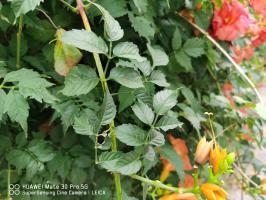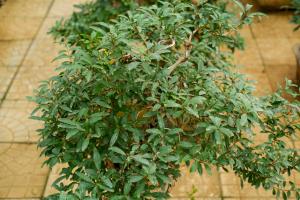Introduction:
If you're into plants, you might have noticed the beauty of moss on plant pots. Moss not only enhances the aesthetic appeal of your pots and planters, but also provides a suitable environment for microorganisms and beneficial insects. It also helps to retain moisture in the soil, protecting your plants from drought stress.
Choose the right type of moss:
Before you start to grow moss, it's important to know the different types of mosses available. There are over 20,000 species of mosses, and each type has its unique preferences for growing conditions. In general, damp, shaded areas are ideal for mosses. The most common varieties used for moss gardening include cushion moss, haircap moss, and rock cap moss. Choose a type that is suitable for your climate and locality.
Prepare the pot:
Make sure your pot is clean and free from any debris or dirt. Moss grows well on porous or rough surfaces, so try to select a pot with a textured surface. You can also create a textured surface by attaching rocks, pebbles, or bark to the pot. This will provide a stable base for your moss to grow and spread.
Harvesting the moss:
You can buy moss spores from a garden center or online, or you can search for natural sources of moss. If you plan to harvest moss from the wild, ensure that it is legal in your region and seek advice from experts. Use a knife or spatula to gently loosen the moss from its base and transfer it to your pot. Be careful not to damage the moss or the roots.
Plant the moss:
Moss prefers a moist, acidic environment. You can simulate this by mixing peat moss, sand, and water in a bucket to make a slurry. Spread the slurry evenly over the surface of the pot using a paintbrush or your fingers. Gently press the moss onto the surface of the pot to ensure it has good contact with the slurry. Water the moss regularly to keep it moist and prevent it from drying out.
Maintaining the moss:
Once your moss has taken root, it's important to maintain it properly. Keep the pot moist at all times, but avoid overwatering, as this can stunt the growth of moss. Moss does not require fertilizers or insecticides, as it can absorb the required nutrients and defend itself from pests naturally. However, you might need to remove any debris or leaves that may accumulate on the surface of the moss.
Conclusion:
Growing moss on plant pots is an easy and rewarding way to enhance the beauty of your garden. Moss is a low-maintenance, eco-friendly option for gardeners looking to add some greenery to their spaces. With a little bit of patience and care, you can create a stunning, natural-looking garden full of texture and character. Happy gardening!

 how many times do yo...
how many times do yo... how many planted tre...
how many planted tre... how many pine trees ...
how many pine trees ... how many pecan trees...
how many pecan trees... how many plants comp...
how many plants comp... how many plants can ...
how many plants can ... how many plants and ...
how many plants and ... how many pepper plan...
how many pepper plan...





























